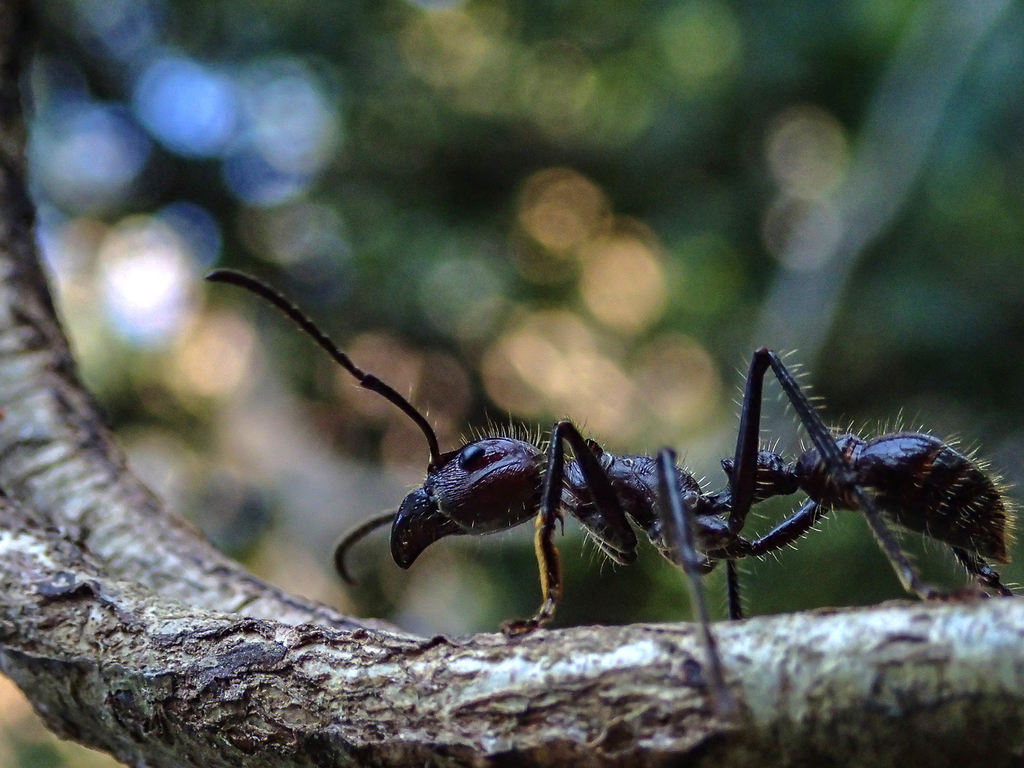In the dense jungles of Belize, a tiny but fearsome creature roams, striking fear into the hearts of those who encounter it. Known as the bullet ant, this small insect packs a powerful punch with its venomous sting, earning itself a notorious reputation as one of the most formidable insects in the region. Despite its diminutive size, the bullet ant’s sting is said to be so excruciating that it’s likened to the sensation of being shot, hence its fitting name. In this article, we delve into the world of the bullet ant, uncovering the truth behind its painful sting, the secrets of its potent venom, and how locals in Belize navigate life alongside this infamous insect. Join us on a journey into the intriguing realm of the bullet ant, where danger and fascination intersect in the wilds of Belize.
Unraveling the Legend: Discover the truth behind the bullet ant’s reputation for delivering a sting that feels like being shot.
The legend of the bullet ant’s sting is not just a tale spun for dramatic effect; it is a reality that has been experienced by many who have crossed paths with this formidable insect. Entomologists and researchers have long been fascinated by the bullet ant’s sting, which is considered one of the most painful among all insects.
The key to understanding why the bullet ant’s sting is so excruciating lies in the composition of its venom. Unlike some insects that rely on quantity over quality, the bullet ant produces venom that is potent in small doses. This potency is attributed to the presence of a neurotoxic peptide called poneratoxin, which targets the nervous system and induces intense pain upon injection.
What sets the bullet ant’s sting apart from others is not just the intensity of the pain but also its duration. Victims of a bullet ant sting often describe the pain as relentless, with sensations of burning, throbbing, and aching that can last for hours. Some have even reported experiencing waves of pain that come and go, reminiscent of the sensation of being shot.
Interestingly, the bullet ant’s sting is not just a defensive mechanism; it also serves as a warning to potential predators. The intensity of the pain serves as a deterrent, signaling to would-be attackers that the bullet ant is not to be trifled with. This has earned the insect a level of respect and fear among both humans and animals in its natural habitat.
Despite the daunting reputation of the bullet ant’s sting, locals in Belize have learned to coexist with these insects, recognizing their role in the ecosystem and adapting their behaviors accordingly. In the face of such a formidable creature, understanding the truth behind the legend is not just a matter of curiosity but also a lesson in respect for nature’s extraordinary creations.
Nature’s Defense Mechanism: Explore the reasons behind the bullet ant’s potent venom and its impact on humans and other creatures.
The bullet ant’s potent venom is not just a random evolutionary trait; it serves a crucial purpose in the insect’s survival and the dynamics of its ecosystem. Understanding the reasons behind this venom’s potency sheds light on the intricate balance of nature and the interactions between species.
One of the primary roles of the bullet ant’s venom is as a defense mechanism. As a relatively small creature in a world full of potential predators, the bullet ant relies on its venomous sting to ward off threats and protect itself and its colony. The intensity of the pain caused by the venom serves as a powerful deterrent, ensuring that predators think twice before attempting to harm a bullet ant.
Beyond its defensive function, the bullet ant’s venom also plays a role in hunting and capturing prey. While bullet ants primarily feed on nectar and insects, they occasionally hunt larger prey such as spiders and small vertebrates. The venom helps immobilize these larger targets, making them easier for the ants to subdue and consume.
The impact of the bullet ant’s venom extends beyond its immediate victims. In the intricate web of life in Belize’s jungles, the presence of bullet ants influences the behavior of other species. Animals learn to recognize and avoid areas where bullet ants are abundant, minimizing potential conflicts and ensuring the survival of both predators and prey.
For humans, encountering a bullet ant can be a painful reminder of the insect’s formidable defenses. However, it also serves as a lesson in the complexity of nature and the diverse strategies that species employ for survival. Studying the bullet ant’s potent venom not only reveals insights into its biology but also highlights the interconnectedness of all living things in the natural world.
Living with Danger: How locals in Belize coexist with the presence of bullet ants and the cultural significance of these insects in the region.
In Belize, where the lush rainforests teem with diverse wildlife, locals have learned to navigate their environment with a deep respect for its inhabitants, including the notorious bullet ant. Despite the insect’s formidable sting, communities have developed strategies to coexist harmoniously with these tiny but potent creatures.
One of the key aspects of living alongside bullet ants is understanding their habits and habitats. Locals are well-versed in identifying areas where bullet ants are likely to be found, such as in rotting logs, tree hollows, and along forest trails. By recognizing these hotspots, people can take precautions to avoid accidental encounters and minimize the risk of getting stung.
Additionally, traditional knowledge plays a crucial role in mitigating the impact of bullet ants on daily life. Elders and community members often share stories and practices that have been passed down through generations, offering insights into how to safely interact with the natural world. This includes techniques for safely navigating areas inhabited by bullet ants and recognizing early warning signs of their presence.
Despite the potential danger posed by bullet ants, these insects also hold cultural significance in Belize. They are often featured in folklore, where they symbolize strength, resilience, and the balance between humans and nature. In some indigenous communities, bullet ants are revered for their role in the ecosystem and are seen as guardians of the forest.
The coexistence between locals and bullet ants highlights a broader ethos of respect for nature’s power and diversity. Rather than viewing these insects as mere pests or threats, communities in Belize embrace the presence of bullet ants as part of the rich tapestry of life in the rainforest. This harmonious relationship serves as a model for sustainable living and reinforces the interconnectedness of humans and the natural world.
Final Thoughts:
The world of the bullet ant in Belize is one of complexity and intrigue, where nature’s power and beauty are intertwined with the challenges of coexistence. As we conclude our exploration of these fascinating insects, several key reflections emerge.
Firstly, the bullet ant’s reputation for delivering a sting that feels like being shot is not just a myth but a reality deeply rooted in its potent venom and defensive strategies. Understanding the science behind this phenomenon enriches our appreciation for the intricacies of nature’s designs.
Secondly, the impact of the bullet ant extends beyond its immediate interactions with humans; it shapes the behaviors and dynamics of the entire ecosystem. From deterring predators to influencing the movements of other species, the presence of bullet ants reverberates throughout Belize’s rainforests.
Lastly, the coexistence between locals and bullet ants underscores the importance of respect, adaptation, and traditional knowledge in navigating natural environments. By embracing the cultural significance of these insects and integrating strategies for safe interaction, communities in Belize exemplify a harmonious relationship with the natural world.
In essence, the bullet ant serves as a symbol of resilience, adaptation, and the intricate web of life in Belize’s jungles. As we continue to explore and learn from the wonders of nature, may we carry forward the lessons of coexistence, respect, and appreciation for all living beings, no matter how small or formidable they may be.




